METEORITES (2016-2019) by Numiscollect
One of the more popular genres in modern numismatics over the last decade or so, meteorite adorned coins depict an astronomical body or event, and incorporate a fragment of genuine meteorite. Three producers are the main players in this market – CIT Coin Invest, the Mint of Poland, and Numiscollect. The flagship series of the latter of those three is simply called ‘Meteorites’, and has been running since 2016.
These are impressive coins. Each is struck in three ounces of fine 0.999 silver, and while there are some differences in final execution, they all incorporate two consistent features. Firstly, and as we just stated, they have on their reverse face a piece of meteorite that sits embedded into a square area, bordered with a small ridge. The fragment is likely related to the subject of the coin, although that has never been the claim of Numiscollect. The Vesta issue from 2018 is particularly neat in that the 333 mintage is divided into three runs of 111 pieces, each with a different meteorite fragment in it. The Apollo pair were eventually issued as a two coin set and only 99 examples of each were minted.
The second distinguishing feature is a coloured glass inlay in the centre of the coin. Whether the coin is convex or concave, this feature draws the eye in and depicts an image related to the coin subject. Most of the seven issues to date are images of the astronomical body of choice, although the two Apollo issues feature images of the lunar craft, and the latest Chicxulub coin depicts what looks to be a satellite image of the Yucatan Peninsula where the meteorite that probably wiped out the dinosaurs, impacted.
All the coins are beautifully detailed in high-relief, with five of them taking on a dual-sided convex form, and the two impact crater coins featuring some impressive, shaped concave strikes. The two sub-types also differ in their approach to the obverse face. The convex coins depict a similar design to the reverse face, but the concave pair display some excellent imagery related to the ground impact, especially the latest Chicxulub issue with its Tyrannosaurus Rex representing the death of the dinosaurs some 65 million years ago.
This is an outstanding series, although definitely a higher-end one, with issue prices of over €400. Despite that, they all sell out, which is a testament to the quality on offer, and the impressive core designs. The 2019 Campo Del Cielo and the 2019 Chicxulub issues are personal favourites if I were to pick one up, but all are equally desirable for fans of this very popular genre.
In 1576, the governor of a province in Northern Argentina commissioned the military to search for a huge mass of iron, which he had heard that Natives used for their weapons. The Natives claimed that the mass had fallen from the sky in a place they called Piguem Nonralta which the Spanish translated as Campo del Cielo (“Field of Heaven”). The expedition found a large mass of metal protruding out of the soil. They assumed it was an iron mine and brought back a few samples, which were described as being of unusual purity. The governor documented the expedition and deposited the report in the Archivo General de Indias in Seville, but it was quickly forgotten and later reports on that area merely repeated the Native legends. Following the legends, in 1774 don Bartolome Francisco de Maguna rediscovered the iron mass which he called el Meson de Fierro (“the Table of Iron”). Maguna thought the mass was the tip of an iron vein. The next expedition, led by Rubin de Celis in 1783, used explosives to clear the ground around the mass and found that it was probably a single stone. Celis estimated its mass as 15 tonnes and abandoned it as worthless. He himself did not believe that the stone had fallen from the sky and assumed that it had formed by a volcanic eruption. However, he sent the samples to the Royal Society of London and published his report in the Philosophical Transactions of the Royal Society. Those samples were later analysed and found to contain 90% iron and 10% nickel and assigned to a meteoritic origin.
Later, many iron pieces were found in the area weighing from a few milligrams to 34 tonnes. A mass of about 1 tonne known as Otumpa was located in 1803. A 634 kilograms (1,398 lb) portion of this mass was taken to Buenos Aires in 1813 and later donated to the British Museum. Other large fragments are summarized in the table below. The mass called el Taco was originally 3,070 kilograms (6,770 lb), but the largest remaining fragment weighs 1,998 kilograms (4,405 lb). The largest mass of 37 tonnes was located in 1969 at a depth of 5 m using a metal detector. This stone, named El Chaco, is the second heaviest single-piece meteorite after the Hoba meteorite (Namibia) which weighs 60 tonnes. However, the total mass of the Campo del Cielo fragments found so far exceeds 60 tonnes, making it the heaviest meteorite ever recovered on Earth.
Samples of charred wood were taken from beneath the meteorite fragments and analyzed for carbon-14 composition. The results indicate the date of the fall to be around 4,200–4,700 years ago, or 2,200–2,700 years BC.
The Earth’s only natural satellite, the moon is the largest in the solar system relative to the planet it orbits. The second densest after Jupiter’s Io, it’s thought to have formed just after the Earth around 4.5 billion years ago from an impact between a Mars-sized body and the Earth itself.
Set in synchronous rotation with the Earth, always showing its same face, the moon’s gravitational influence produces the ocean tides and is arguably a huge factor in the appearance of life on our planet. The Moon’s current orbital distance is about thirty times the diameter of Earth, causing it to have an apparent size in the sky almost the same as that of the Sun. This allows the Moon to cover the Sun nearly precisely in total solar eclipse. This matching of apparent visual size is a coincidence.
One of the major geologic processes that has affected the Moon’s surface is impact cratering, with craters formed when asteroids and comets collide with the lunar surface. There are estimated to be roughly 300,000 craters wider than 1 km on the Moon’s near side alone. Obviously, this leaves plenty of debris and when a new object impacts the lunar surface, some of that debris is ejected back into space. Occasionally, it lands on Earth.
Mars is the second-smallest planet in the Solar System after Mercury and is the fourth farthest away from the Sun. Named after the Roman god of war, it gets its nickname, ‘The Red Planet’ due to its colour, brought about by the presence of iron oxide.
The surface topography is much like an amalgamation of Earth and lunar features, having valleys, deserts, and polar ice caps like the former and plenty of impact craters like the latter. The rotational period and seasonal cycles of Mars are likewise similar to those of Earth, as is the tilt that produces the seasons. Mars is the site of Olympus Mons, the largest volcano and second-highest known mountain in the Solar System, and of Valles Marineris, one of the largest canyons in the Solar System. The smooth Borealis basin in the northern hemisphere covers 40% of the planet and may be a giant impact feature. Mars has two moons, Phobos and Deimos, which are small and irregularly shaped. These may be captured asteroids, similar to 5261 Eureka, a Mars trojan.
Liquid water cannot exist on the surface of Mars due to low atmospheric pressure, which is about 0.6% that of the Earth’s, although the two polar ice caps appear to be made largely of water. The volume of water ice in the south polar ice cap, if melted, would be sufficient to cover the entire planetary surface to a depth of 11 meters.
Mars is approximately half the diameter of Earth with a surface area only slightly less than the total area of Earth’s dry land. The planet is less dense than Earth, having about 15% of Earth’s volume and 11% of Earth’s mass, resulting in about 38% of Earth’s surface gravity.
Vesta resides in our systems asteroid belt and with a mean diameter of 525 kilometres, it’s one of the largest objects within it. Discovered by German astronomer Heinrich Wilhelm Olbers on 29 March 1807, it was named after Vesta, the virgin goddess of home and hearth from Roman mythology. Vesta remains the brightest asteroid visible from Earth. In the asteroid belt only the dwarf planet Ceres is larger, and it contributes an estimated 9% of the total mass of material within the belt – slightly larger than Pallas, but significantly more massive. Rocky protoplanets of the kind that formed the terrestrial planets are rare to the point that Vesta is the only known example remaining in our system discovered to date.
Vesta has given up fragments of itself to collisions one and two billion years ago. The huge craters are clearly visible and cover much of Vesta’s southern hemisphere. Debris from these impacts has fallen to Earth as howardite–eucrite–diogenite (HED) meteorites and provided much information on the makeup of Vesta, as well as providing adornment on a thousand or so silver coins…
More information on Vesta and Ceres continues to be gathered. Between 16 July 2011 and 5 September 2012, NASA’s Dawn spacecraft orbited around Vesta and collected much data to enhance our understanding of this fascinating body.
Apollo 8, the second manned spaceflight mission flown in the United States Apollo space program, was launched on December 21, 1968, and became the first manned spacecraft to leave low Earth orbit, reach the Moon, orbit it, and return. The three-astronaut crew—Frank Borman, James Lovell, and William Anders—were the first humans to witness and photograph an Earthrise and to escape the gravity of a celestial body. Apollo 8 was the third flight and the first crewed launch of the Saturn V rocket and was the first human spaceflight from the Kennedy Space Center, located adjacent to Cape Canaveral Air Force Station in Florida.
Originally planned as the second crewed Apollo Lunar Module and command module test, to be flown in an elliptical medium Earth orbit in early 1969, the mission profile was changed in August 1968 to a more ambitious command-module-only lunar orbital flight to be flown in December, as the lunar module was not yet ready to make its first flight. Astronaut Jim McDivitt’s crew, who were training to fly the first lunar module flight in low Earth orbit, became the crew for the Apollo 9 mission, and Borman’s crew were moved to the Apollo 8 mission. This left Borman’s crew with two to three months’ less training and preparation time than originally planned, and replaced the planned lunar module training with translunar navigation training.
Apollo 8 took 68 hours (almost three days) to travel the distance to the Moon. The crew orbited the Moon ten times over the course of twenty hours, during which they made a Christmas Eve television broadcast in which they read the first ten verses from the Book of Genesis. At the time, the broadcast was the most watched TV program ever. Apollo 8’s successful mission paved the way for Apollo 11 to fulfill U.S. president John F. Kennedy’s goal of landing a man on the Moon before the end of the 1960s. The Apollo 8 astronauts returned to Earth on December 27, 1968, when their spacecraft splashed down in the northern Pacific Ocean. The crew members were named Time magazine’s “Men of the Year” for 1968 upon their return. (Source: Wikipedia)
One small step for [a] man, one giant leap for mankind. With these words, astronaut Neil Armstrong opened up the next phase in human exploration by stepping from the Apollo 11 lunar lander onto the surface of the Moon. Joined 20 minutes later by Buzz Aldrin, and watched overhead by designated driver, Michael Collins, this was an event that was watched around the world with absolute admiration.
It was July 20, 1969, at 20:17 UTC that the lunar module Eagle touched down in the Sea of Tranquillity, and six hours later Armstrong set foot on the surface. Along with Aldrin, they spent around 135 minutes walking on the lunar surface and collected a little more than 21 kg of material to return to Earth. Including their time in the module, they spent 21½ hours on the Moon.
The mission to the Moon was called Apollo 11, and started with the launch of a Saturn V rocket from Kennedy Space Center on Merritt Island, Florida, on 16 July at 13:32 UTC and was the fifth manned mission of NASA’s Apollo program. The Apollo spacecraft was constructed around three basic parts. A command module was the living and control space for the three astronauts, and was the only part that splashed back down to Earth in the Pacific Ocean on July 24 after more than eight days in space. The service module supplied the command module with power and propulsion, and the lunar module landed on the Moon surface (The Eagle has landed) and returned the two walkers back to the command module.
One of the first major events that was broadcast live around the world, the landing affirmed the United States as the victor in the Space Race against the Soviet Union, after being beaten by the Communist superpower in the race to get a man into orbit some years previously. There were just five further manned landings on the Moon, the last in 1972, and amazingly, there weren’t even any unmanned landings between 1976 and the end of 2013. Conspiracy theories abound about the truth of the landings, of course, most complete nonsense, but it happened and this fantastic achievement will be heavily commemorated this year.
The Chicxulub crater is an impact crater buried underneath the Yucatán Peninsula in Mexico.[4] Its center is located near the town of Chicxulub, after which the crater is named.[5] It was formed by a large asteroid or comet about 11 to 81 kilometres (6.8 to 50.3 miles) in diameter,[2] the Chicxulub impactor, striking the Earth. The time of the impact coincides with the Cretaceous–Paleogene boundary (K–Pg boundary), slightly less than 66 million years ago,[3] and a widely accepted theory is that worldwide climate disruption from the event was the cause of the Cretaceous–Paleogene extinction event, a mass extinction in which 75% of plant and animal species on Earth became extinct, including all non-avian dinosaurs.
The crater is estimated to be 150 kilometres (93 miles) in diameter[4] and 20 km (12 mi) in depth, well into the continental crust of the region of about 10–30 km (6.2–18.6 mi) depth. It is the second largest confirmed impact structure on Earth and the only one whose peak ring is intact and directly accessible for scientific research.[6]
The crater was discovered by Antonio Camargo and Glen Penfield, geophysicists who had been looking for petroleum in the Yucatán during the late 1970s. Penfield was initially unable to obtain evidence that the geological feature was a crater and gave up his search. Later, through contact with Alan Hildebrand in 1990, Penfield obtained samples that suggested it was an impact feature. Evidence for the impact origin of the crater includes shocked quartz,[7] a gravity anomaly, and tektites in surrounding areas.
In 2016, a scientific drilling project drilled deep into the peak ring of the impact crater, hundreds of meters below the current sea floor, to obtain rock core samples from the impact itself. The discoveries were widely seen as confirming current theories related to both the crater impact and its effects.
SPECIFICATION
| METEORITES | |
| DENOMINATION | $20 CID (Cook Islands) |
| COMPOSITION | 0.999 silver |
| WEIGHT | 93.3 grams |
| DIMENSIONS | 65.0 mm |
| FINISH | Antique |
| MODIFICATIONS | Meteorite insert, coloured glass inlay, ultra-high-relief |
| MINTAGE | 333 per design |
| BOX / C.O.A. | Yes / Yes |


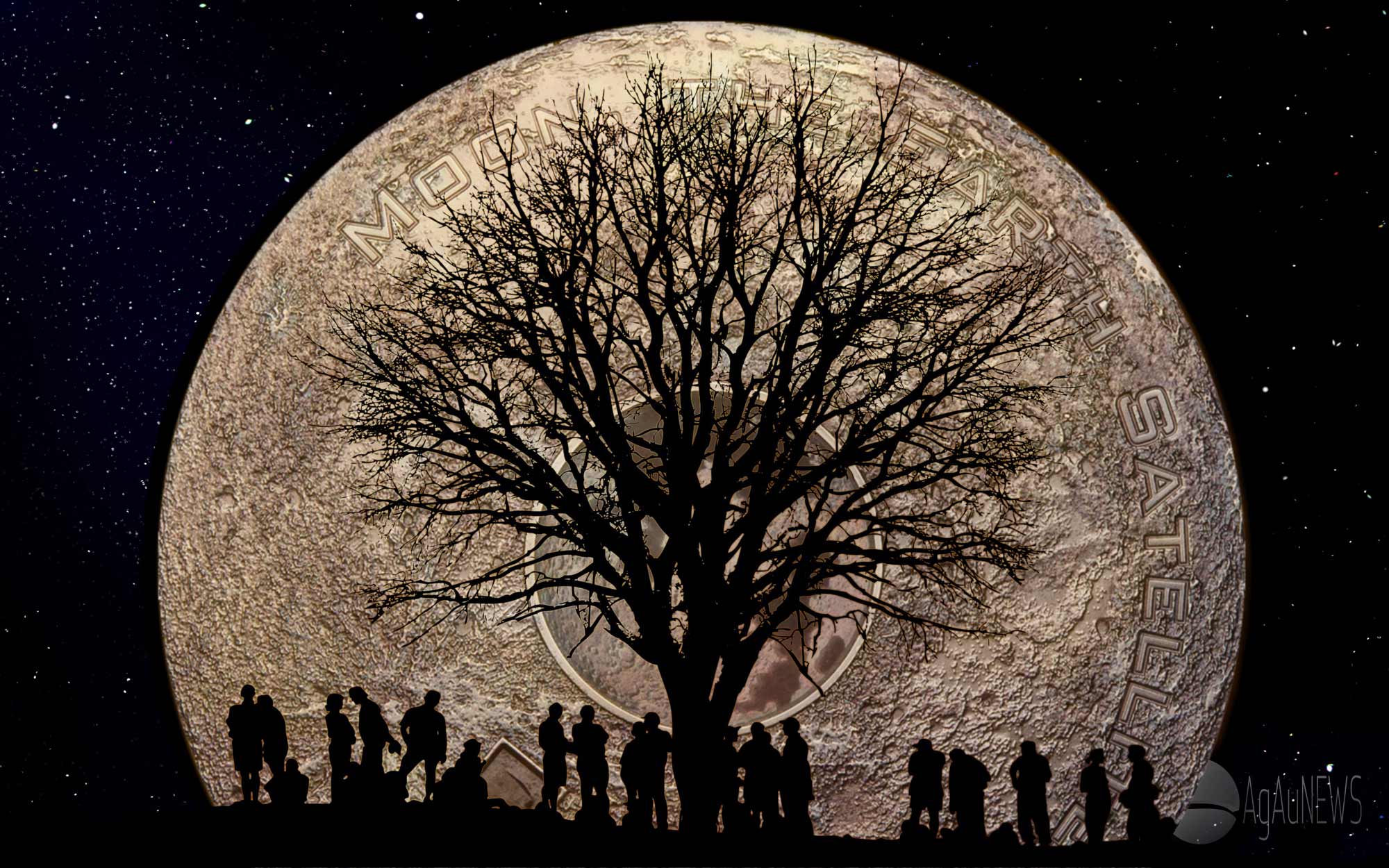




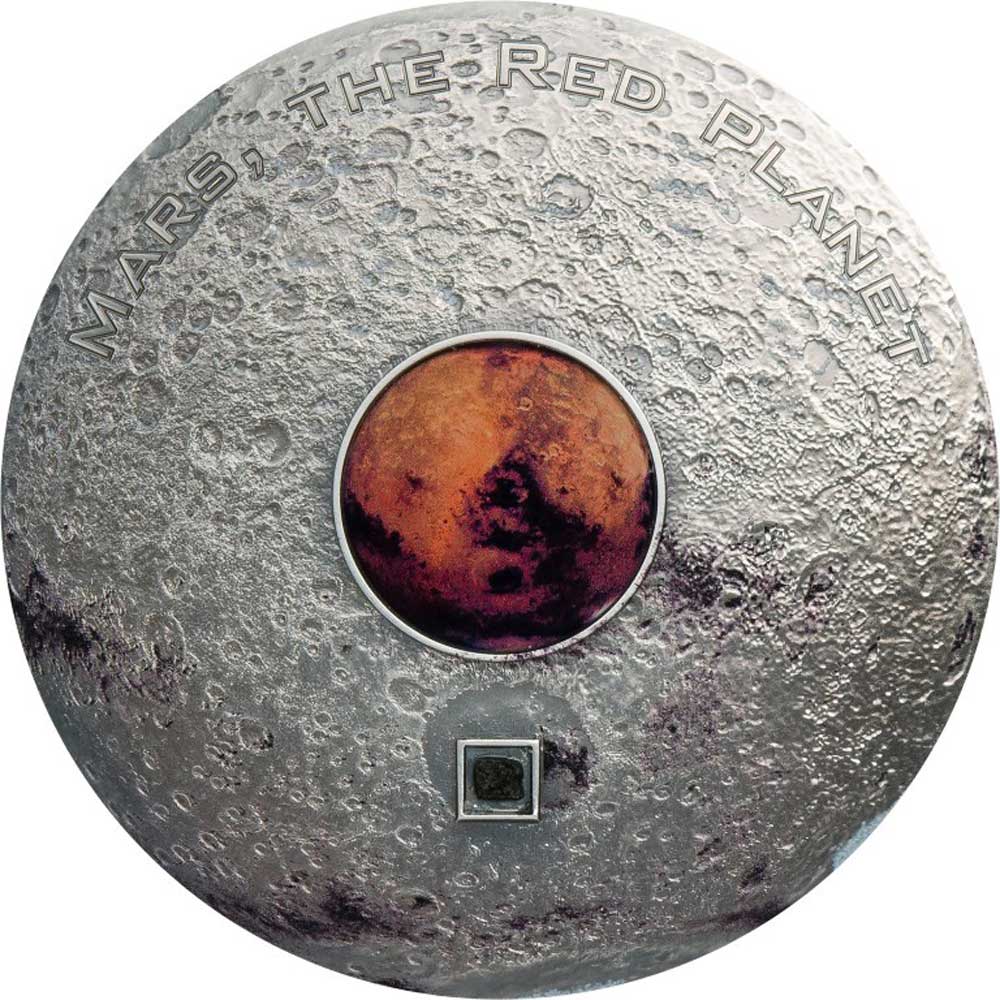


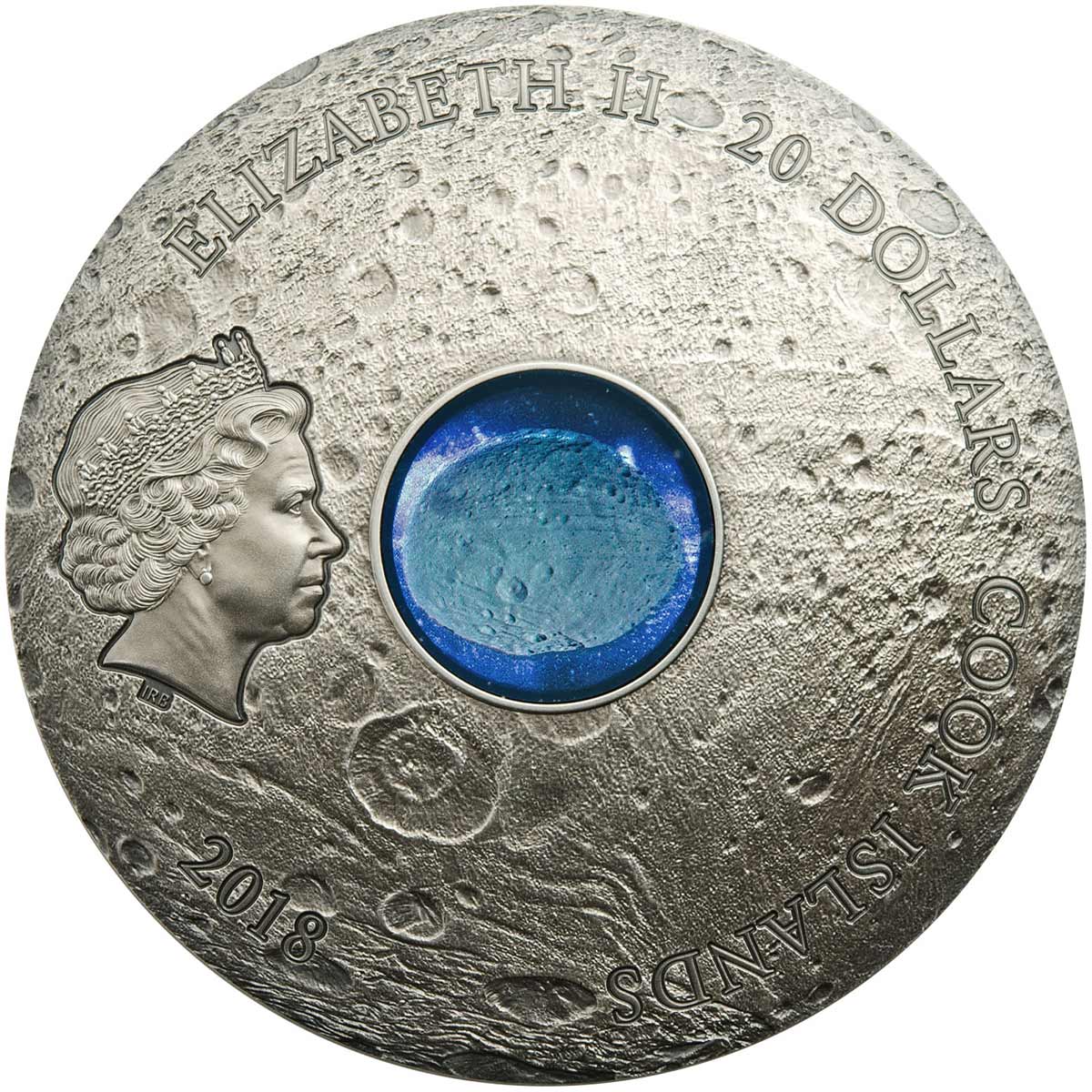

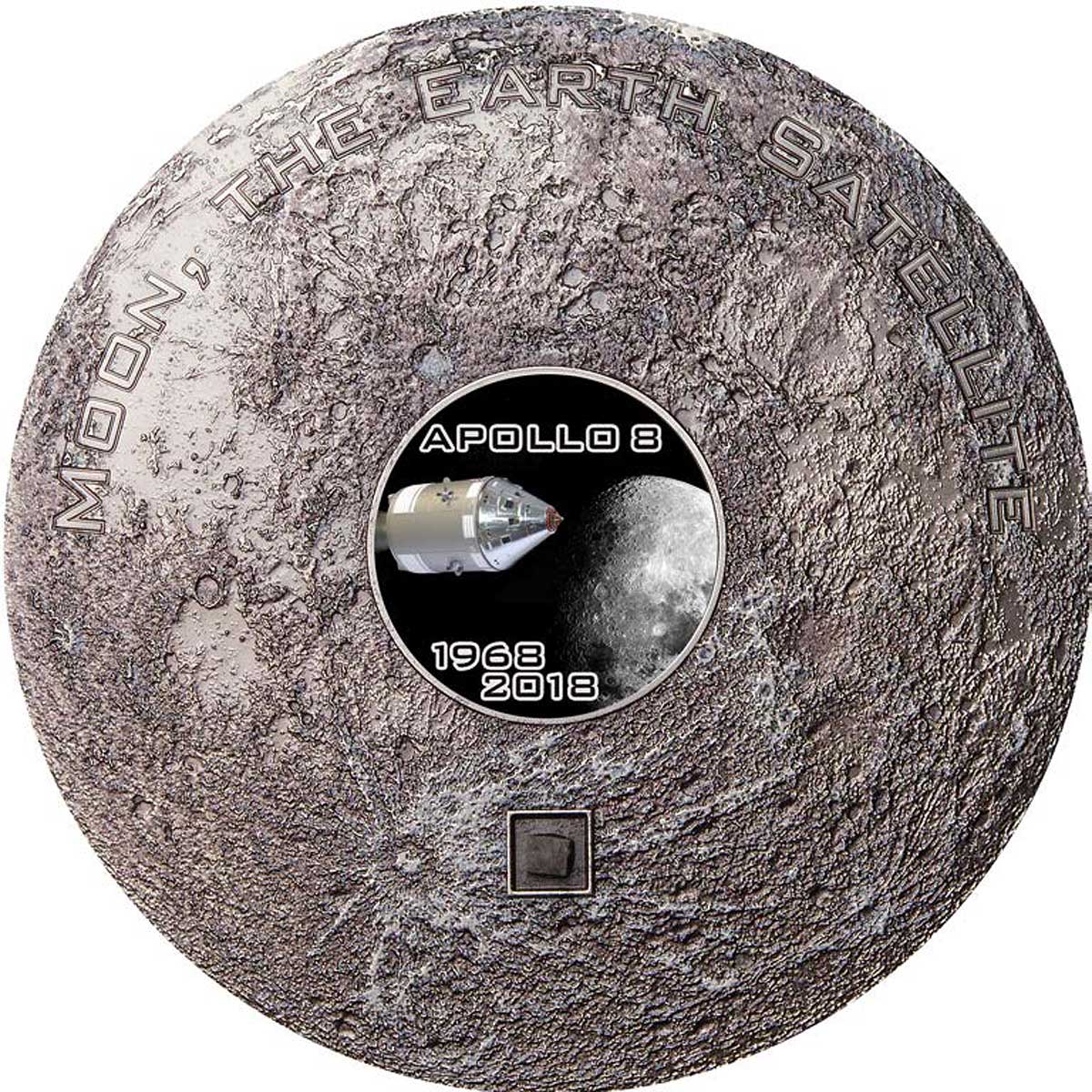
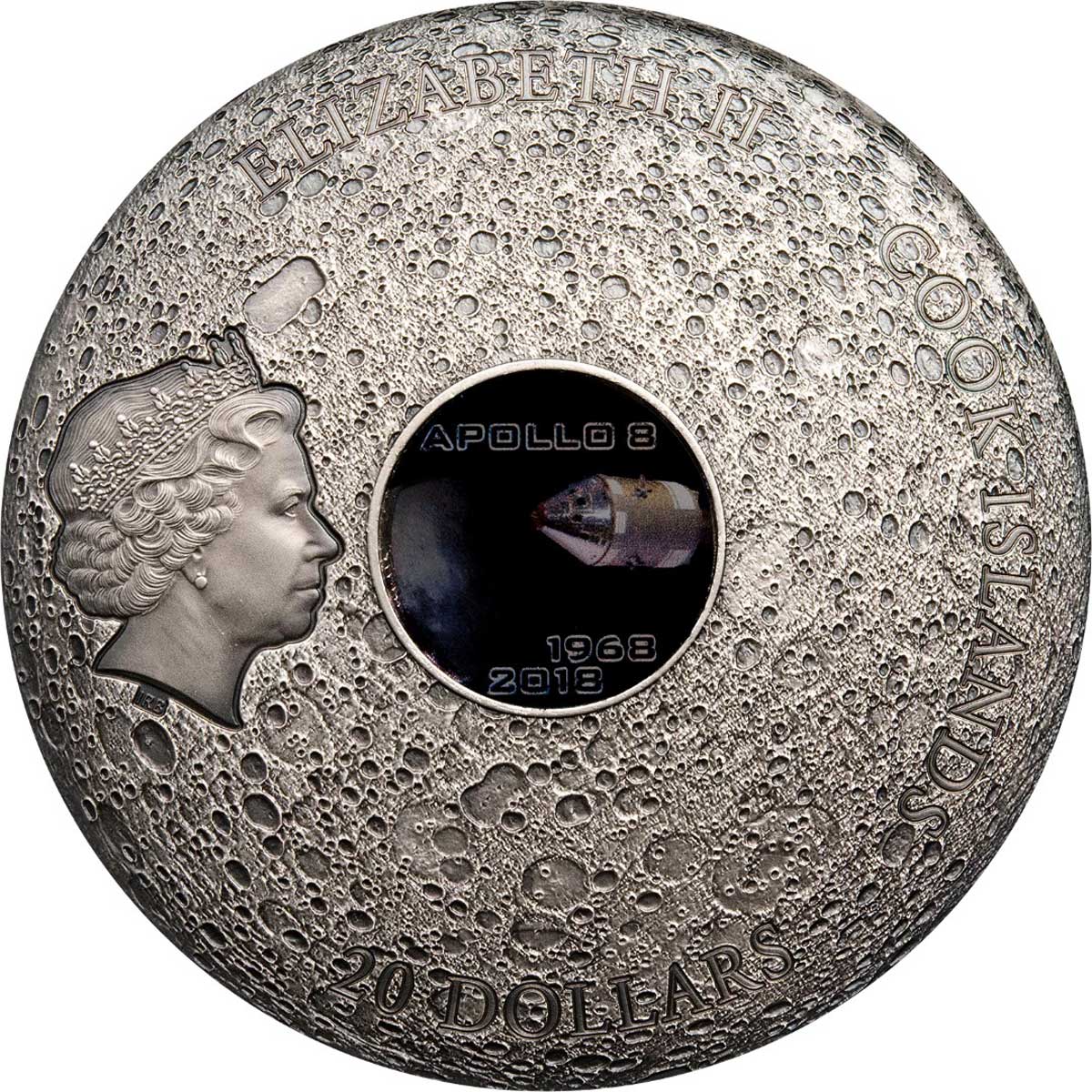


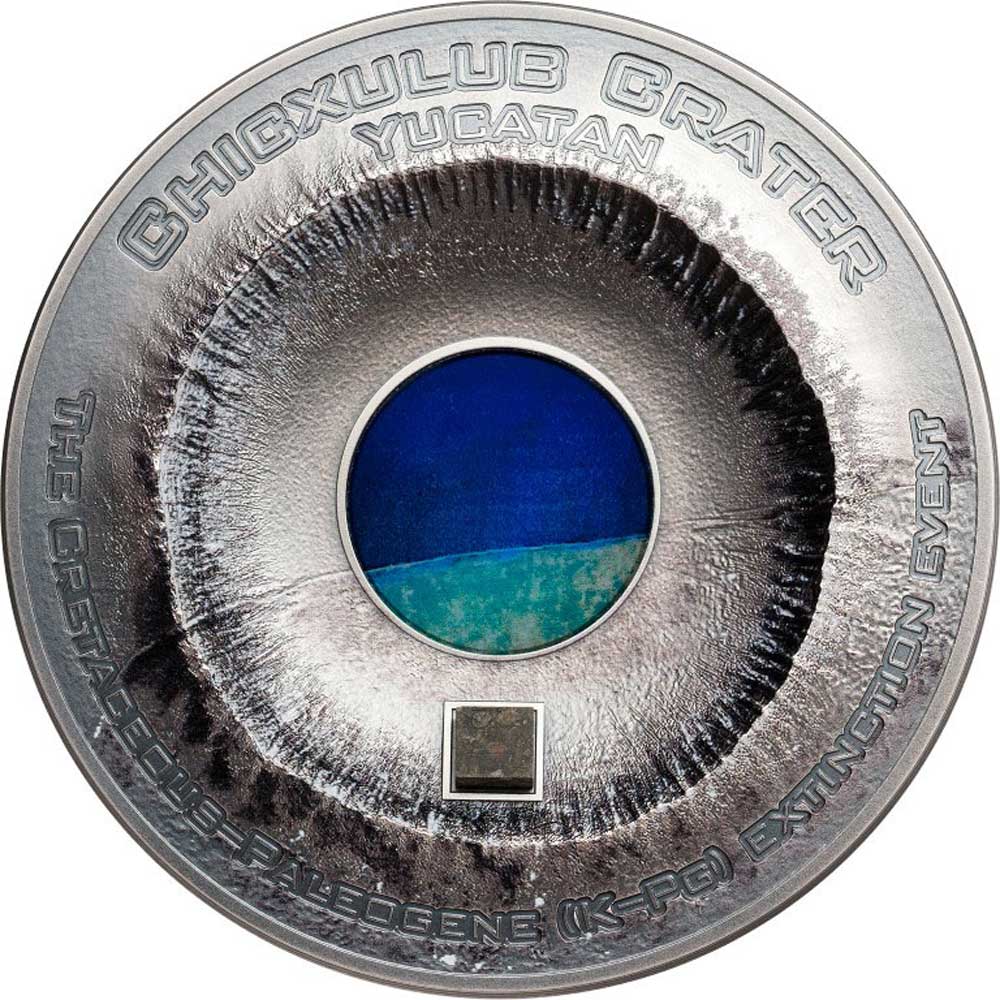


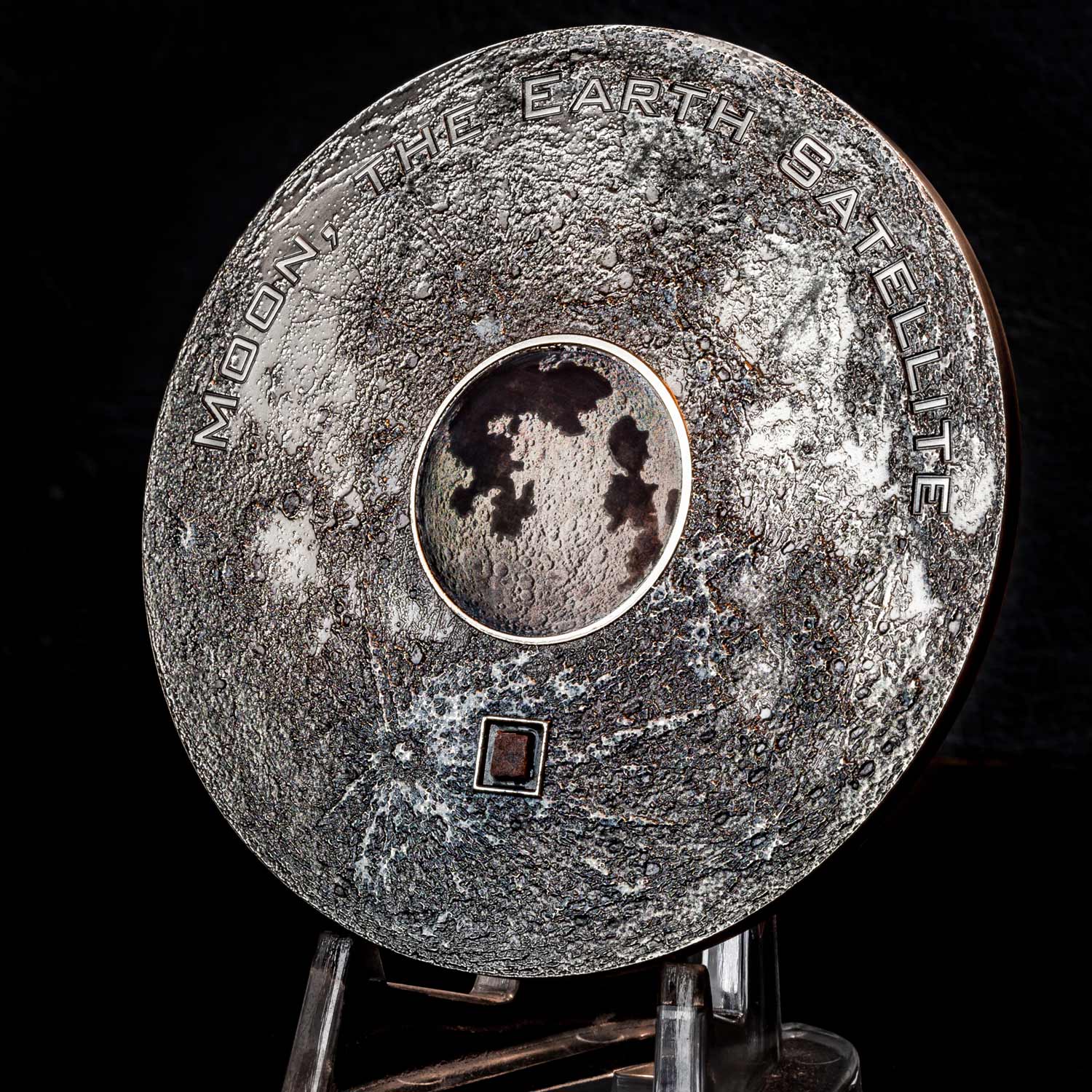
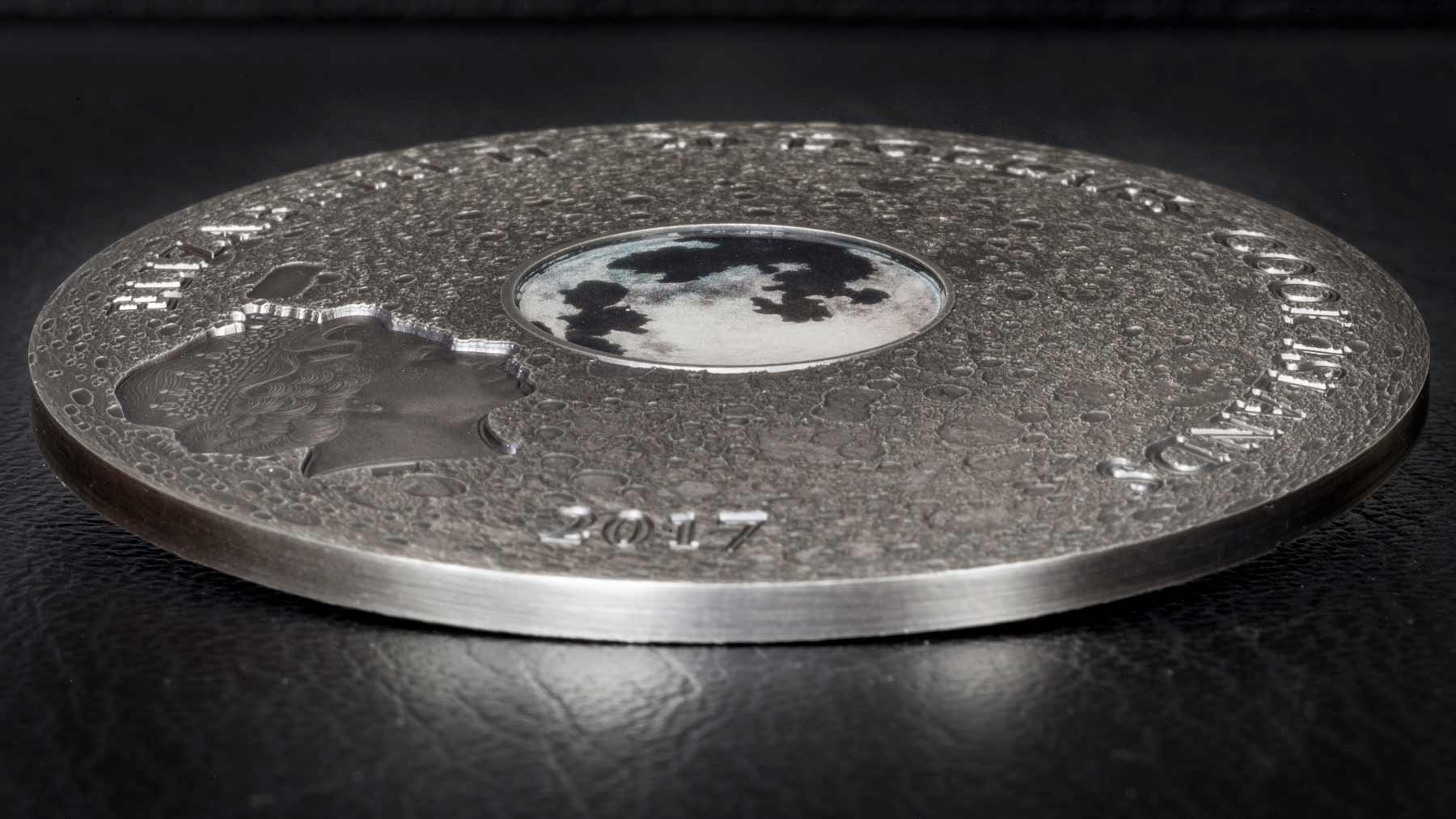

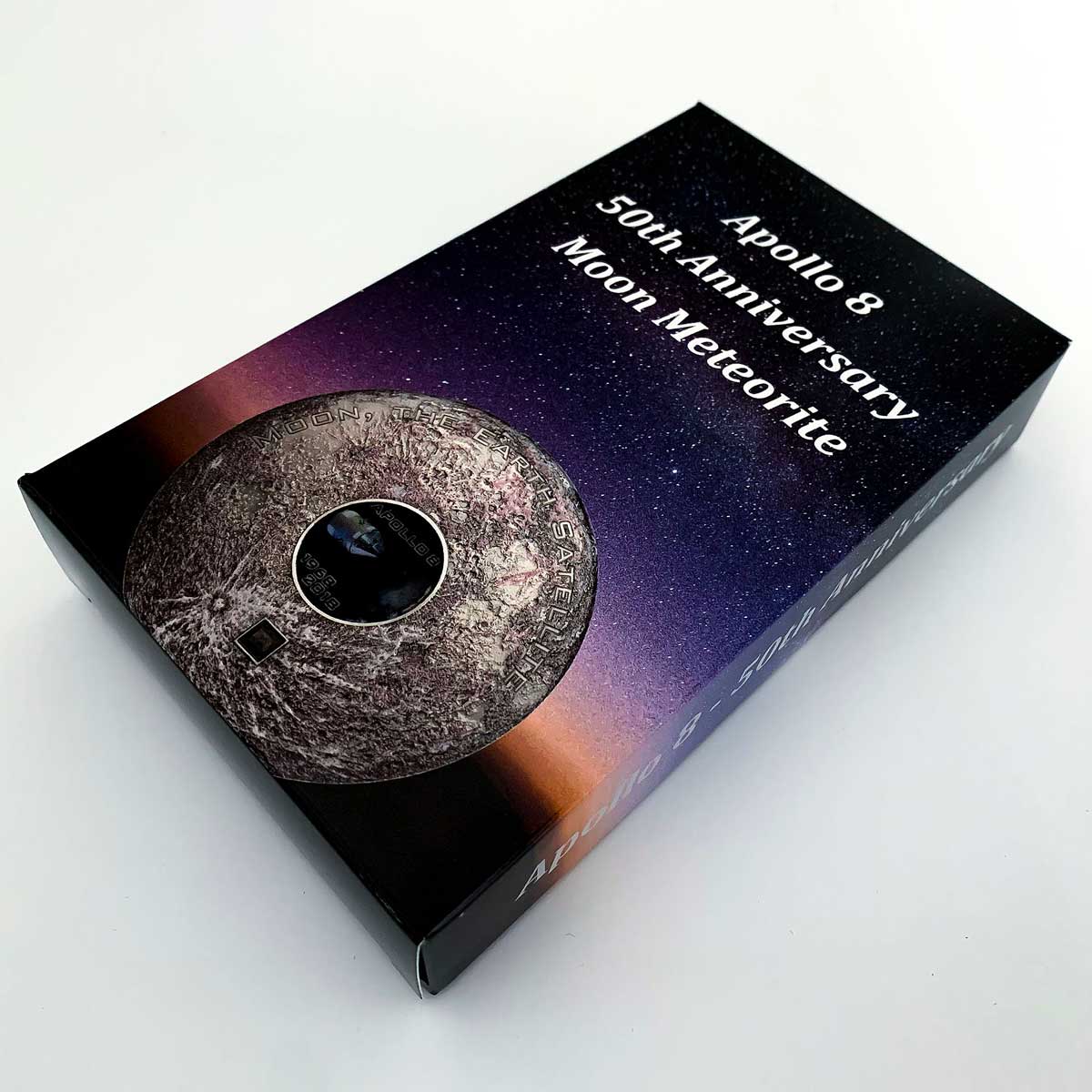
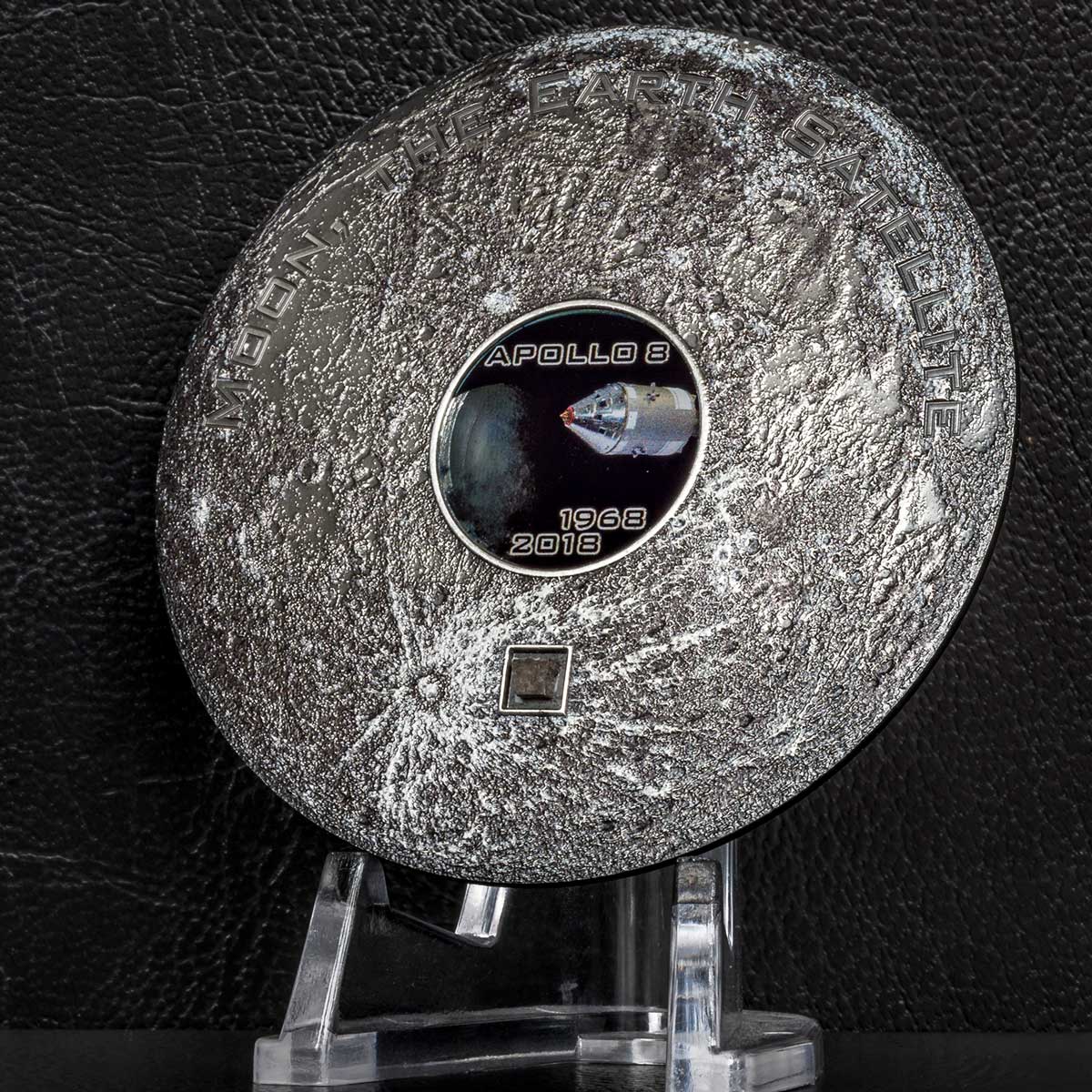
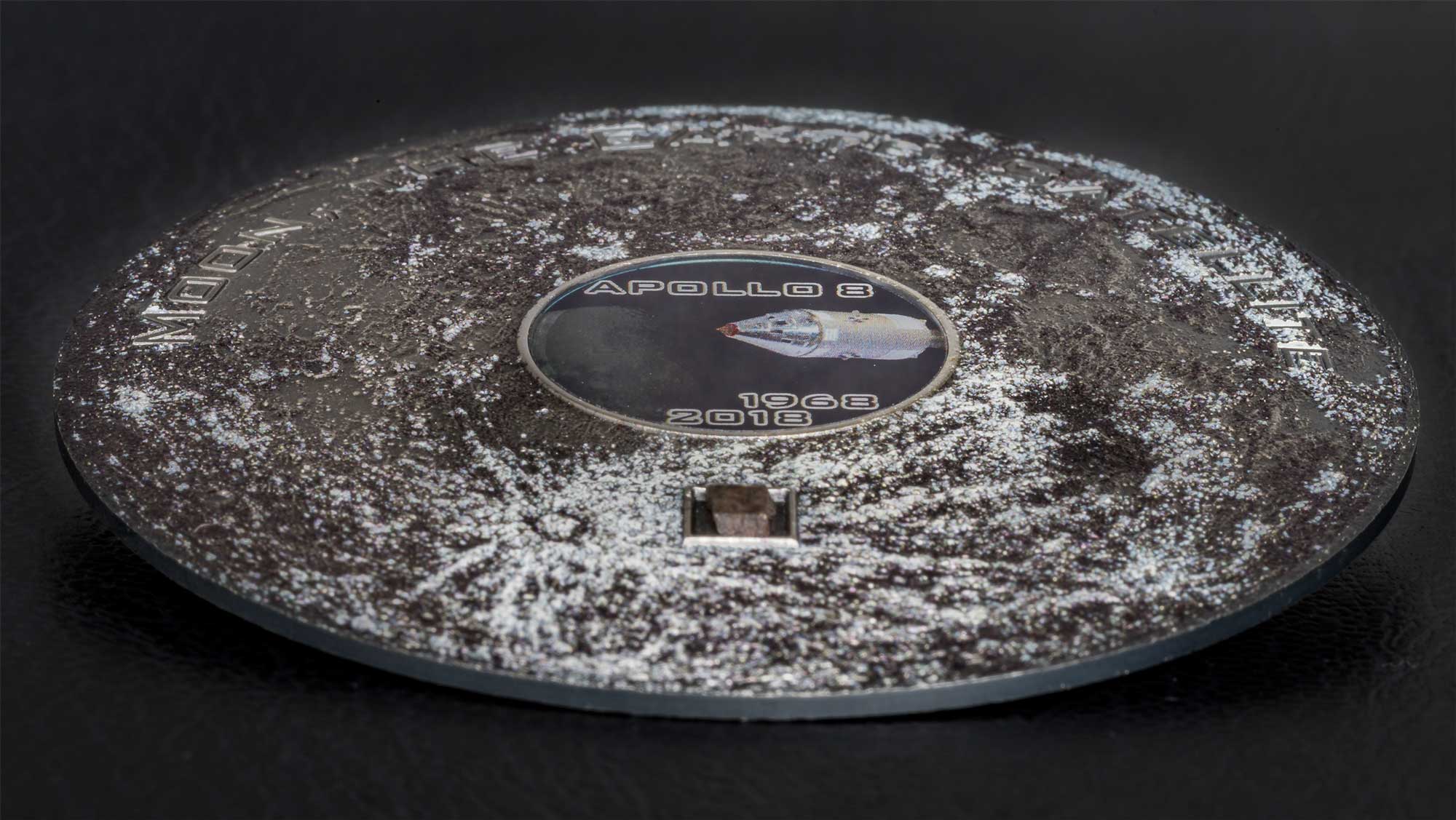

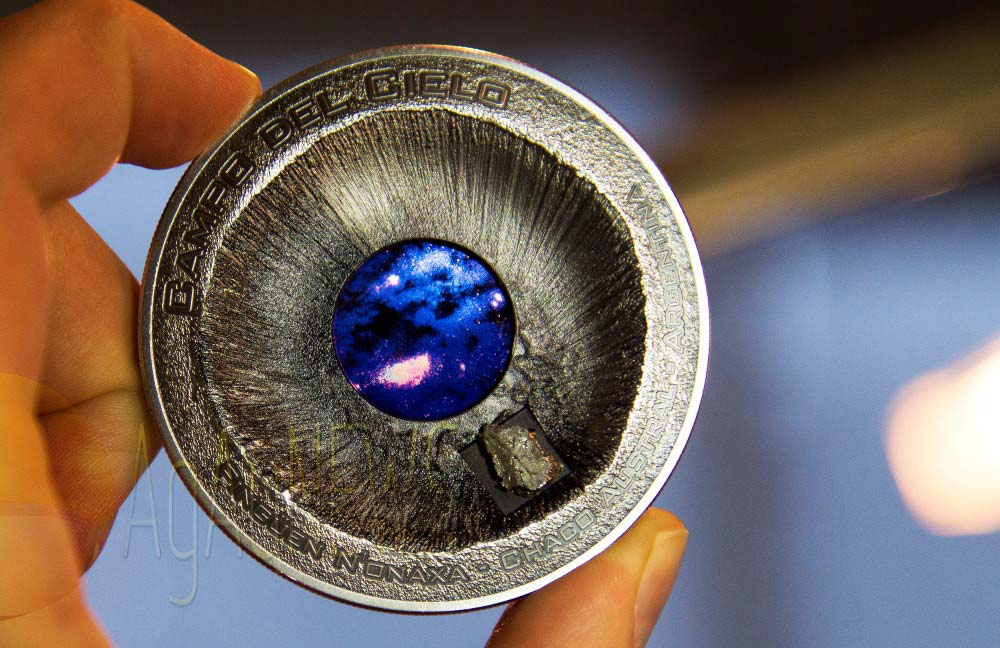

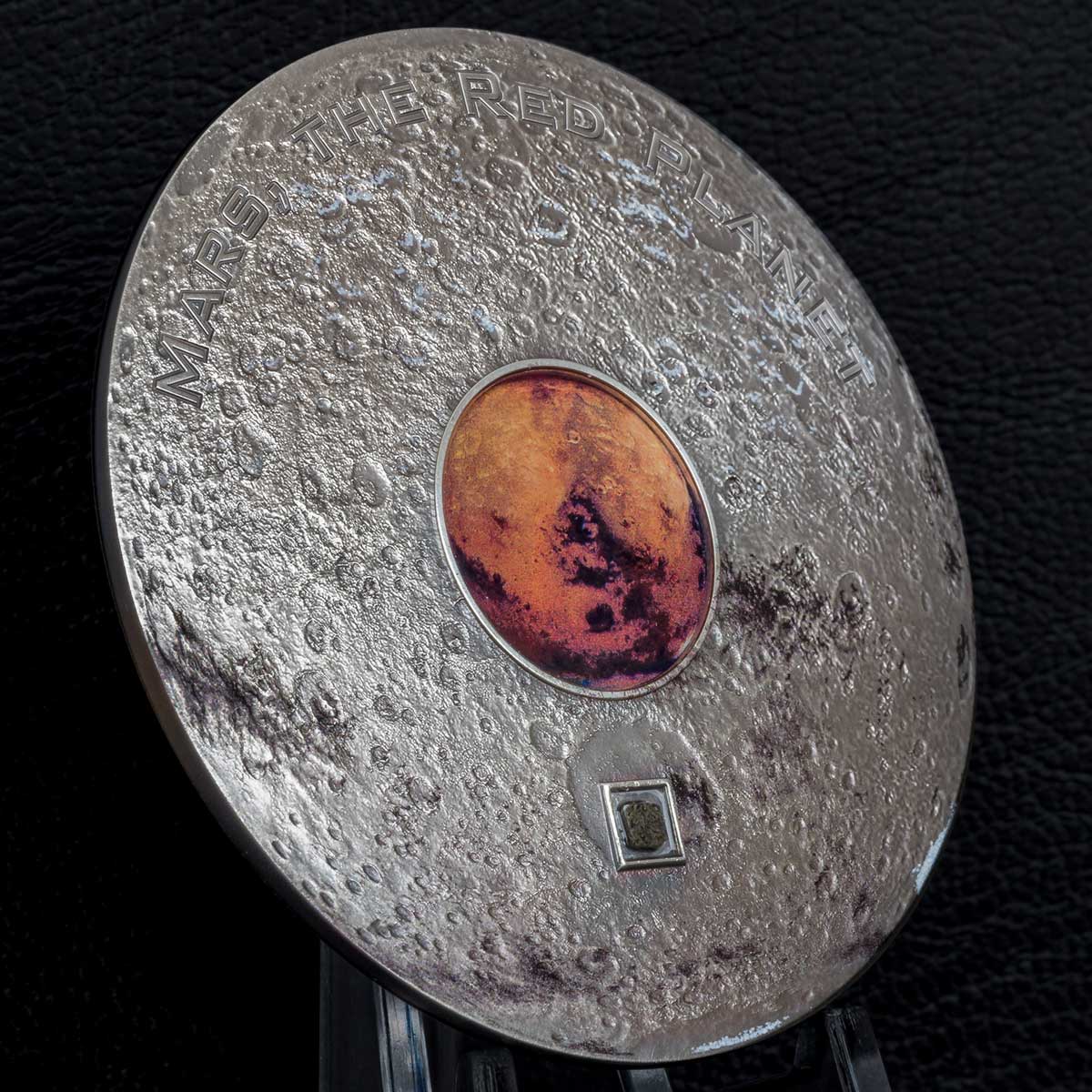
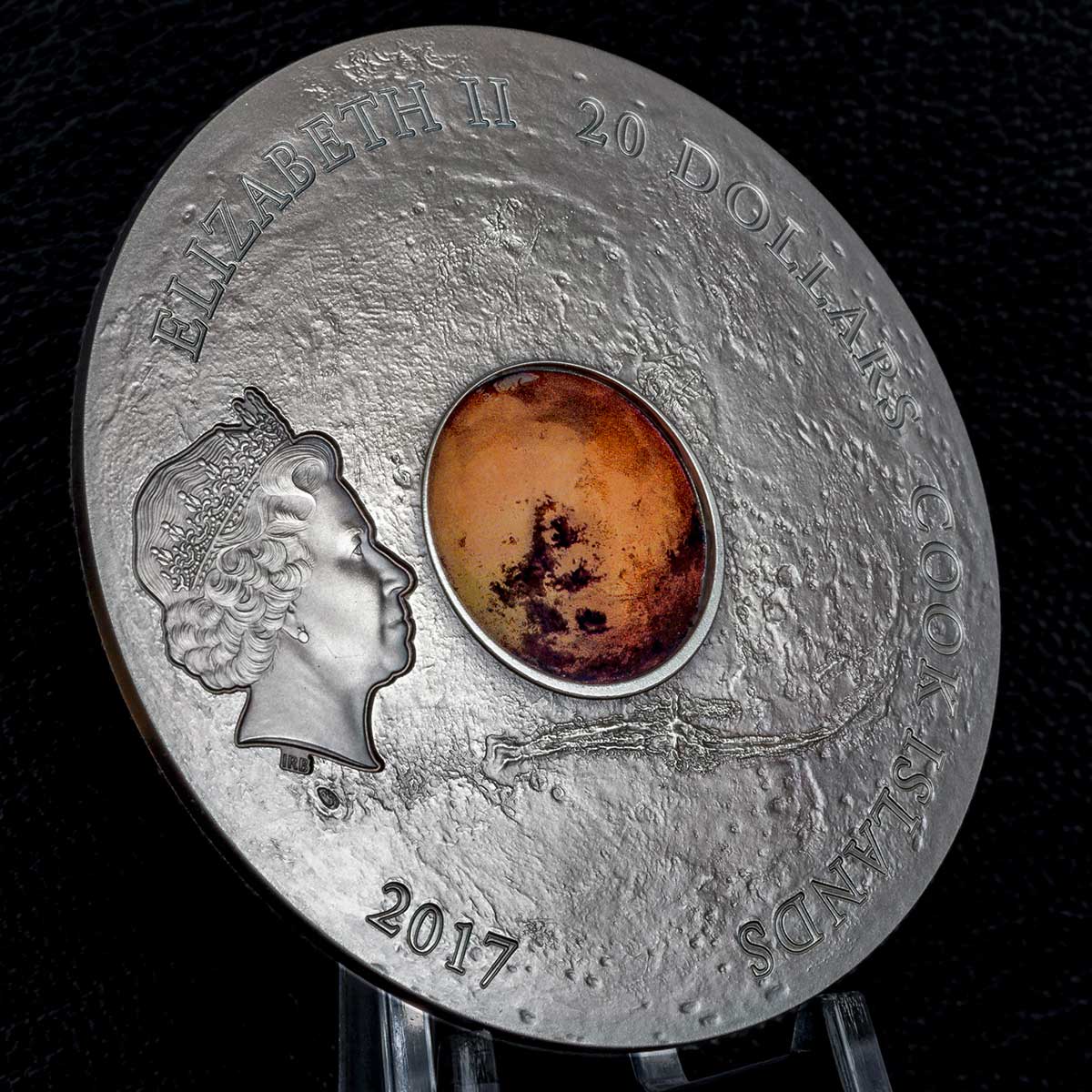

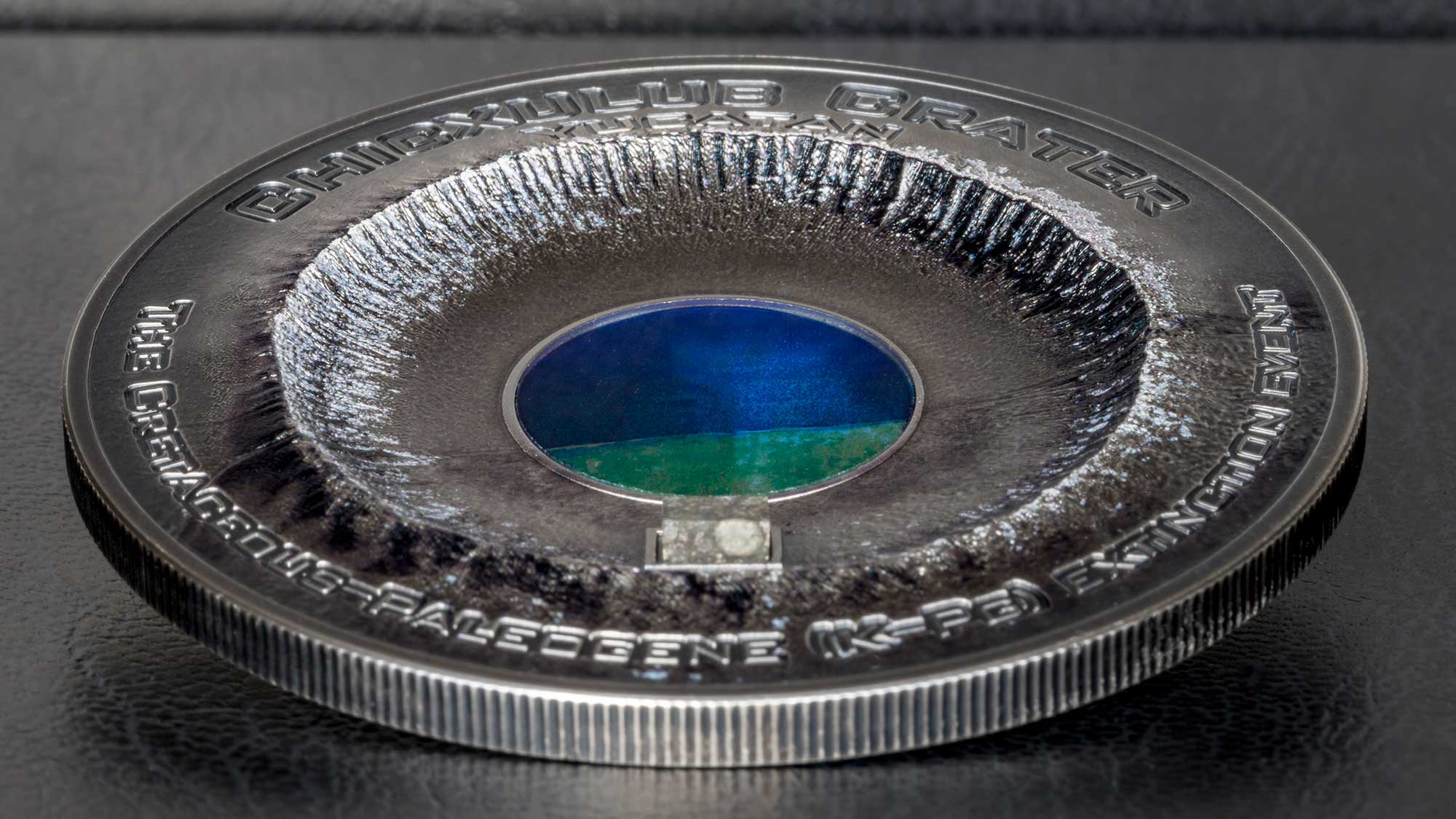
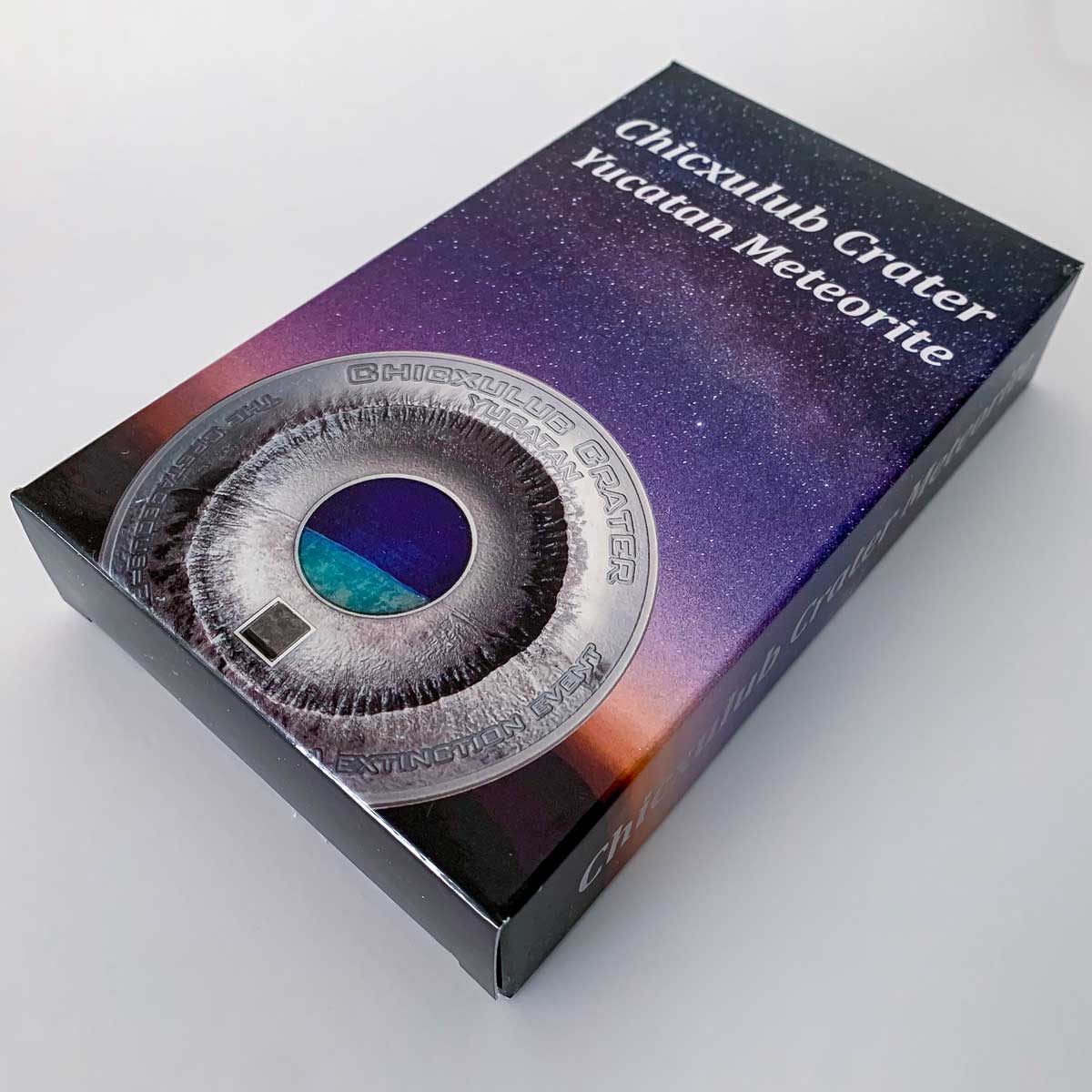
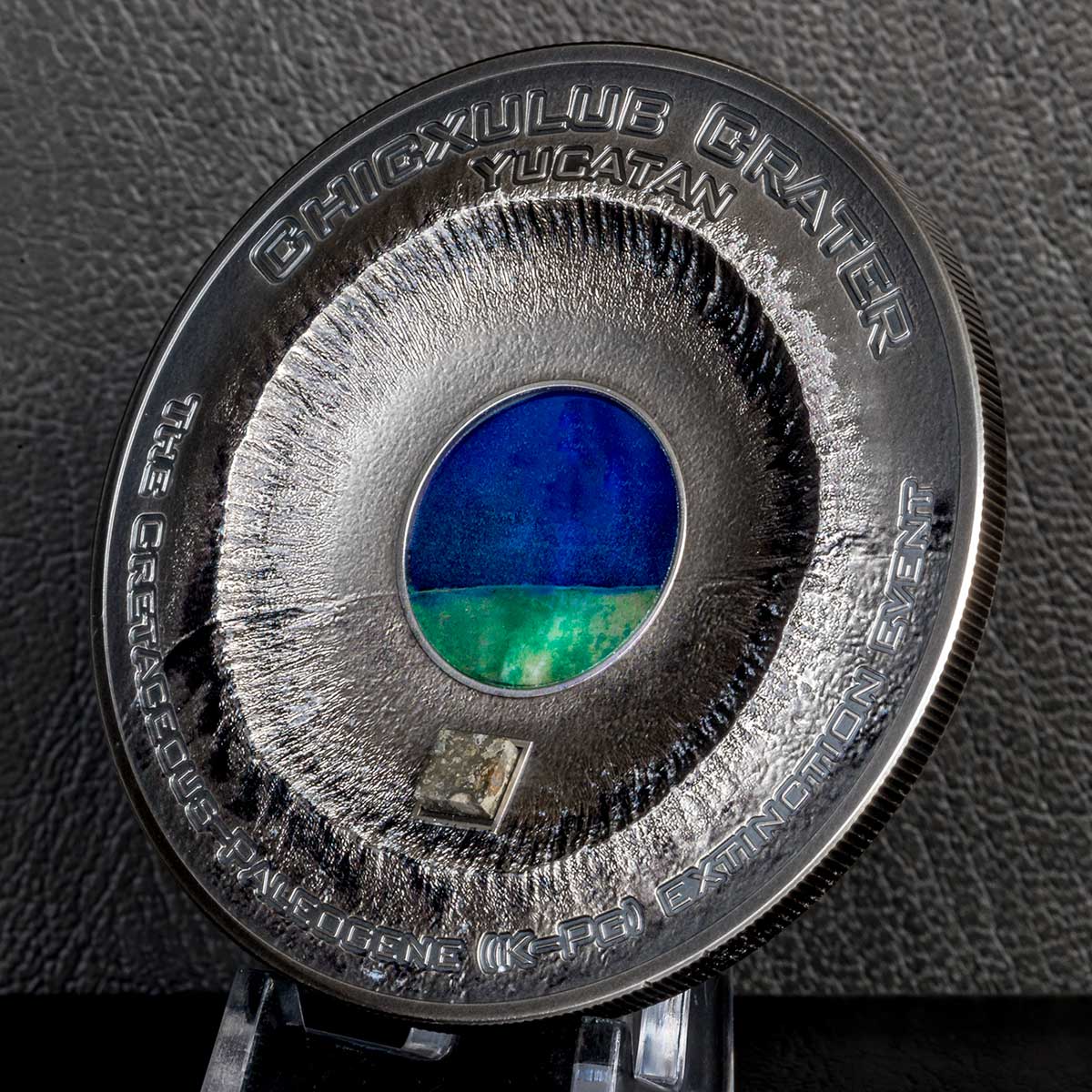
Leave A Comment